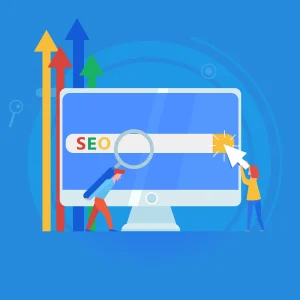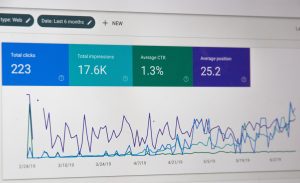For every business, having a website is essential, but it is not enough! In order to boost the profitability of your business, you must start by understanding how to fully exploit the potential of your website.
In this article, we will explore the different ways your website can increase the profitability of your business to outperform your competitors.
Attract qualified traffic through SEO
The SEO (Search Engine Optimization) otherwise called natural referencing is one of the fundamental pillars.
It simply involves optimizing your website in a way that makes it more visible to search engines. Good natural referencing allows you to attract qualified traffic, that is to say visitors interested in what you offer. And that’s the goal!
To improve your natural referencing, you must take several elements into account:
1. Keywords
Identify the most searched keywords related to your field of activity and integrate them relevantly into your content.
The 3 different types of keywords:
Generic keywords
Made up of a single word, they benefit from a very high search volume and therefore, logically, a lot of competition. For example: “Car” or “Jacket”. The problem with these keywords is that they generally don’t convert very well because people’s intentions are too different. A person who searches for “Jacket” on Google will come across sites offering all kinds of jackets in leather, velvet, for sports, for skiing, for a wedding, for gardening…
It’s complicated to find a place in all that.
Medium tail keywords
Made up of 2 to 3 words maximum, they record a good search volume but much lower than that of generic keywords (at least 2,000 monthly searches). They are a little more precise and specific, like: “Electric car” or “Suit jacket”. The competition is a little lower and your chances of positioning yourself are therefore higher. However, you will need to create very good quality content and obtain a small batch of backlinks to hope to position yourself on these coveted terms on the first page of Google.
Long tail keywords
Made up of 4 or more words, they are generally very specific. Expressions like “train in online digital marketing” or “cheap car for students” are examples of long-tail keywords. These terms are not subject to a large volume of monthly searches (usually between 30 and 400 searches per month). But, when you put them end to end, these keywords bring their share of traffic! Above all, what is interesting with these keywords is that they bring very qualified traffic. In summary, they record few monthly searches but the people searching for these terms have a clear intention and are generally part of your target. The traffic is therefore lower but the conversion higher.
2. Content quality
The content on your website should be informative, relevant and of high quality. Offer your visitors useful information, practical advice and answers to their questions. This strengthens credibility and your online visibility!
2.1. Technical optimization
A technically well-optimized website includes things like site structure, loading speed, mobile compatibility, and the use of meta tags. So it’s more likely to rank high in search results. This is where SEO becomes relevant !
When visitors arrive on your website, it’s essential to captivate them and inspire them to take action. This is where an attractive design comes in. Here are some tips for improving your website design:
2.2. Simplicity, a clean, easy-to-navigate design
Anyone browsing your website should be able to easily find what they are looking for. If it’s too complex or cluttered, visitors may not know where they should go. Most people don’t have the patience to embark on a tedious online treasure hunt.
And simple websites will tend to load faster too, especially when there’s no need to render large, complex graphics or animations.
Simplicity leads to more visits
It’s true ! In addition to being more attractive, your site will be much more effective in attracting visitors to your cause and products.
A simpler site will perform better on mobile devices.
Let’s be honest: most people will probably visit your site from their mobile device. Simpler website layouts often lend themselves much better to smaller screens. Again, if your site is too cluttered, it may be difficult for mobile users to click buttons and navigate to the desired location.
You will provide a better user experience.
2.3. Calls to Action
Use attractive buttons, powerful titles and compelling descriptions.
2.4. Adaptability to mobile devices
Make sure your website is compatible with mobile devices (phone, tablet, etc.)
Engage your website visitors with interactive content.
To increase visitor engagement on your website, it is essential to offer interactive content. Here are some ideas to achieve this:
Videos
Explain your products or services, share customer testimonials or tutorials. Videos capture visitors’ attention and encourage them to stay on your site longer!
Quizzes and surveys
Offer interactive quizzes or polls to encourage visitors to interact with your content. This helps gather valuable information about your target audience.
Comments and social networks
Encourage visitors to leave comments on your website and share your content on social media. This stimulates interaction and promotes the creation of a community around your brand.
Conclusion
Your website has the potential to significantly boost your bottom line by attracting qualified traffic, converting visitors into customers and encouraging engagement. By optimizing your SEO, improving the design of your website and offering interactive content, you can outperform your competitors and reach the top positions on Google. Do not wait any longer !

